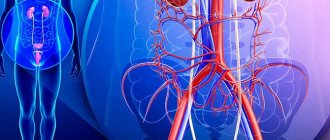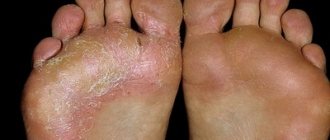Each vitamin plays a significant role in maintaining life and is involved in many different processes. However, almost all have a predominant direction of action. For example, vitamin A is known to be very important for vision, K is indispensable for blood clotting, for immunity, and so on. If we talk about the functions of vitamin D, the main one is that it maintains normal bone health.
Vitamin deficiency is dangerous for adults and children, so it should not be tolerated under any circumstances. To avoid any problems with the musculoskeletal system, it is recommended to monitor the intake of this substance in the body or ensure additional use of vitamin D.
What is vitamin D?
Vitamin D is spoken of as one substance, but in fact it is a whole group of different compounds with a common structure and action.
The most important of these are ergocalciferol, also called vitamin D2, and cholecalciferol, known as D3. Vitamin D was first isolated from fish oil back in the 30s of the last century.
Vitamin D2 is present in some of the foods listed above, and D3 is formed in the human body, in his skin, under the influence of ultraviolet rays from the sun.
The formation of cholecalciferol occurs from the components of sebum, and the “raw materials” for the formation of sebum are animal products and cholesterol molecules.
Foods Rich in Vitamin D
Since a significant part of the vitamin is produced in the epidermis of the skin, first of all, when talking about sources of the vitamin, it is worth mentioning such a “product” as the sun.
The vitamin is released in the skin under the influence of ultraviolet radiation from the sun and under the influence of radiation that a person receives when staying in a solarium. When using a cream with a UV filter, as well as when wearing closed clothing and staying in the shade, the production of vitamin D is reduced.
Food sources of vitamin D2 include fish. Northern varieties of fish are richest in vitamins; their fat contains fairly high dosages of vitamin D. The substance is also present in caviar and fatty dairy products. Some mushrooms, such as chanterelles, also produce ergosterol; small amounts are present in yeast. There is no vitamin in plant foods, with the exception of corn oil.
Increased need for vitamin D
An increased need for calciferol occurs in pregnant and lactating women, in children and adolescents during periods of intensive growth and development. In old age, when natural physiological processes lead to increased fragility of bones, the human body also needs this vitamin more strongly.
The use of medium dosages of vitamin D is mandatory for women who have reached menopause: after the cessation of menstruation, the aging process becomes more active, including the bones begin to suffer significantly and a predisposition to fractures appears.
Absorption of vitamin D from food
Vitamin D is well absorbed from food. Its digestibility increases in the presence of fats and bile acids. Vitamin D is already found in fatty foods, so additional enrichment of the diet with fatty foods is not required.
As for bile acids, their presence in the gastrointestinal tract is not so much a matter of diet, but of health. If a person has good digestion and the liver secretes enough bile, there will be no problems with the absorption of vitamin D.
By the way, a healthy liver is also necessary for storing vitamin D. In the body, it accumulates in adipose tissue and the liver. During the cold season, when little calciferol is produced, its reserves are gradually consumed.
Vitamin D and its role in the human body
A lot has been said about the importance of vitamin D, but most of us prefer to ignore this information and monitoring vitamin levels. According to the Department of Health, at least 25% of the population is vitamin D deficient! In reality, scientists estimate that this figure is actually much higher and is about 60%. What is vitamin D?
Vitamin D is not really a vitamin, since a vitamin is a substance that is not produced by the body. And since vitamin D is produced in the skin under the influence of sunlight, it is equated to a hormone. Although we are able to produce vitamin D, it is rarely found in our bodies in sufficient quantities. It all depends on the latitude in which the population lives, so in our country the level of solar exposure is much lower than, for example, among residents of Australia or Africa. Also, to protect our skin from negative factors that can also be caused by direct sunlight, we use sunscreens; they, of course, block sunlight, and with it the production of vitamin D.
Small amounts of vitamin D can be obtained from certain foods that are fortified with this substance. Such products include:
• milk; • flakes; • fatty fish; • juices, etc.
But the amount of vitamin in them is still too small; sun rays are the main source of vitamin D. So, in order to get the daily requirement of the substance from milk, you should drink 20 glasses of milk per day, which, you see, is not entirely realistic.
The role of vitamin D in the body and symptoms of vitamin D deficiency
Recently, a lot of publications have been devoted to the topic of vitamin D deficiency. Why is its deficiency dangerous? Everyone knows that vitamin D is important for maintaining normal levels of calcium and phosphorus in the body, which are necessary for the production of bone tissue. But scientists are now showing that vitamin D deficiency may be associated with a variety of chronic health problems, including:
• decreased immunity; • diabetes; • depression; • even cell mutations.
Numerous studies point to the relationship between adequate vitamin D and a strong immune system. A group of Danish scientists found a rationale for this fact. Their research showed that a group of special cells called “T cells” are critical to the body's immune defense. These same cells and their work depend on the appropriate level of vitamin D in the blood. When a T cell is exposed to foreign bacteria and viruses, it sends a signaling device known as the vitamin D receptor. If there is a deficiency of vitamin D in the blood, then the T cells remain dormant and cannot resist the attack of bacteria and viruses.
Other studies show a link between type 2 diabetes and vitamin D deficiency. Vitamin D is thought to play a role in the regulation and release of insulin. As a result of vitamin D deficiency, insulin production decreases, which in turn leads to increased blood sugar levels. Small studies have found that vitamin D supplements reduce high blood sugar levels, which is encouraging news for those with a family history of type 2 diabetes.
The relationship between vitamin D and depression is that the vitamin is also present in brain receptors. Animal research has shown that vitamin D increases serotonin levels in the brain, an effect that helps improve mood and feelings of well-being.
Some scientists also consider vitamin D deficiency to be one of the factors contributing to the development of certain cancers. Low vitamin D levels increase the risk of prostate cancer, breast cancer and colon cancer. Since the exact causes of cancer development are still not fully established by scientists, it is impossible to say about the role of vitamin D deficiency.
There is a strong relationship between low vitamin D levels and the risk of developing gingivitis and tooth loss. Scientists believe this may be because vitamin D has an anti-inflammatory effect.
People living in northern countries are more likely to experience heart attacks, and the increasing number of them suggests that they occur as a result of low levels of vitamin D. Ensuring optimal levels of vitamin D can be one way to prevent and treat coronary artery disease.
Also, multiple sclerosis is more common in northern regions, where there is also less sunlight. It is generally accepted that the geographic distribution of multiple sclerosis indicates that people who do not get enough sunlight have a higher risk of developing it. There is good evidence to suggest that vitamin D has benefits in the treatment of multiple sclerosis, which may be due to its anti-inflammatory properties as well as its effect on autoimmune activity.
Osteoporosis is a condition characterized by decreased bone density and an increased risk of bone fractures. Vitamin D3, or cholecalciferol, has several key functions in the prevention of osteoporosis. First, it increases the absorption of calcium and phosphorus from food in the intestines. Second, Vitamin D3 increases calcium reabsorption in the kidneys, releasing more calcium back into the bloodstream. Vitamin D3 also inhibits the release of parathyroid hormone (PTH), which is important for normal bone development. Without enough vitamin D, the body will not be able to get enough calcium from food, since vitamin D facilitates its absorption.
Why does vitamin D deficiency need to be addressed? Unfortunately, the statistics on the consequences of vitamin D deficiency are not encouraging. Here are the main reasons why it is worth fighting the problem of vitamin D deficiency:
• Cases of rickets in childhood have increased by 400% since 1996. The Department of Health has identified four key risk groups for which the Surgeon General recommends taking vitamin D supplements. These groups include: children under 5 years of age, the elderly, lactating and pregnant women, and people with dark skin pigmentation. • Research into the climate and its impact on UK citizens has shown that six months of the year when there is solar radiation is not enough for the human body to synthesize sufficient amounts of vitamin D. Great Britain is more northern, foggy Albion.
How much vitamin D should the body receive? A large amount of research is still being conducted regarding the role of such an important vitamin. We now know that vitamin D plays an important role beyond calcium absorption and bone growth. We also know that vitamin D receptors have been found in more than 50 organs and areas of the body. This fact proves that the body’s need for the substance is much greater than we initially thought.
Recommended doses of vitamin D, established many years ago, range between 200iu and 400 international units. You can get the required amount of vitamin D from a teaspoon of fish oil. A healthy and balanced diet can provide us with a maximum of 10% of the recommended daily intake of vitamin D. Although in most cases, the body draws only about 5% of the recommended daily intake of the vitamin from diet, leaving 95% deficient.
Given these data, can we afford not to take vitamin D? The answer is simple: no. Taking vitamin D supplements will benefit not only children, but also adults, and especially those groups of people who are at particular risk of vitamin D deficiency.
*This content is not intended to replace traditional medical treatment: any suggestions or recommendations in this article are not intended to diagnose, treat, cure, or prevent any disease, condition, or symptom. Personalized advice must be provided by a qualified healthcare professional.
Biological role of vitamin D
• The most important function of vitamin D is that it is responsible for mineral metabolism in bone tissue. With its help, the body absorbs phosphorus and calcium, important elements for building bones. With a normal intake of vitamin D, high bone strength is ensured. • Calciferol also takes part in the production of sex hormones; its presence is necessary for the high-quality synthesis of estrogens and testosterone, regulation of the menstrual cycle, and ensuring the ability to reproduce. • By potentiating the effects of calcium, vitamin D improves blood clotting. • Helps improve metabolism in general. • Participates in the functioning of the immune system. • Helps improve skin condition, can be used in the fight against skin diseases. • Plays a vital role in the formation of the musculoskeletal and nervous systems, in the implementation of growth and development processes in young children.
Interpretation of vitamin D levels based on 25(OH)D concentration
| <10 ng/ml (<25 nmol/l) | Severe vitamin D deficiency |
| <20 ng/ml (<50 nmol/l) | Vitamin D deficiency |
| ≥ 20 and <30 ng/ml (≥50 and <75 nmol/l) | Vitamin D deficiency |
| 30-100 ng/ml (75 - 250 nmol/l) | Adequate levels |
| >150 ng/ml (>375 nmol/l) | Levels with Possible Vitamin D Toxicity |
If it is necessary to evaluate the level of 25(OH)D over time, then the analysis must be taken in the same laboratory.
- 25-OH vitamin D (25-hydroxyvitamin D)
When vitamin D insufficiency or deficiency is detected, it is advisable to also check other indicators of bone health. This is the level of total calcium and calcium ionized in the blood, phosphorus, parathyroid hormone, calcium and creatinine in daily urine, and glomerular filtration rate (GFR).
- Calcium
- Calcium Ca
- Phosphorus
- Parathyroid hormone
- Creatinine, glomerular filtration rate (GFR) according to the Cockroft-Golt formula
- Creatinine, urine (daily)
- Calcium, urine (daily)
Signs of Vitamin D Deficiency
Vitamin D hypovitaminosis is very common, but more often it occurs in a mild form, so it may not be noticed. Babies born in autumn and winter are especially susceptible to it. They are even at risk of developing rickets, a serious disease caused by a lack of vitamin D in the body.
The first signs of vitamin deficiency in children are moodiness, increased sweating, the appearance of “bald patches” on the head, and delayed teething. Later, in the absence of vitamin intake, severe skeletal malformations with bone deformation and other disorders may develop. Today, all children of the first year of life, especially “autumn” and “winter” ones, are prescribed vitamin D prophylactically.
In adults, vitamin deficiency may result in a tendency to fractures.
Daily norm
Today, there are different opinions regarding the daily intake of vitamin D. But you should remember the danger of an overdose of the substance. But there are accepted daily indicators that do not pose a threat, and therefore do not require mandatory analysis:
- For people 18 - 50 years old - up to 800 IU.
- For people over 50 – up to 1000 IU.
At the same time, the daily norm may be affected by pathologies that impair the absorption or metabolism of vitamin D. In this case, the indicators for a certain category of people increase by 2-3 times. But you should definitely consult a doctor.
Vitamin D is very important for the proper development of a child's body. To prevent the occurrence of pathology, daily indicators of the substance should be:
- 1000 IU for infants from four weeks to one year.
- 1500 IU for children aged 1-3 years.
- 1000 IU for children under 18 years of age, while in adolescence it can double.
Why does vitamin D deficiency occur?
Vitamin D deficiency may have the following causes:
• Insufficient intake of products containing it into the body. This is possible when following strict diets or in people who are vegetarians. • Diseases of the digestive system, especially the liver and biliary tract (disorder in the production of bile, which helps the body absorb the vitamin), as well as damage to the small intestine (impaired absorption of the vitamin). • Short exposure to the sun. In the cold season, when a person is rarely exposed to light and constantly wears warm clothes, the risk of hypovitaminosis is especially high.
Contraindications for use
Let's consider the factors under which you should not additionally drink drugs containing ergocalciferol or cholecalciferol:
- individual intolerance, allergic manifestations;
- excess calcium and phosphorus;
- chronic diseases of the cardiovascular system, gastrointestinal tract in acute form;
- pulmonary tuberculosis;
- uncontrolled use;
- violation of metabolic processes;
- decreased immunity.
You cannot combine the use of vitamin D with calcium single preparations containing this substance, as well as with medications containing phosphorus in any form. Proper use in compliance with the dosage gives a lasting result.










